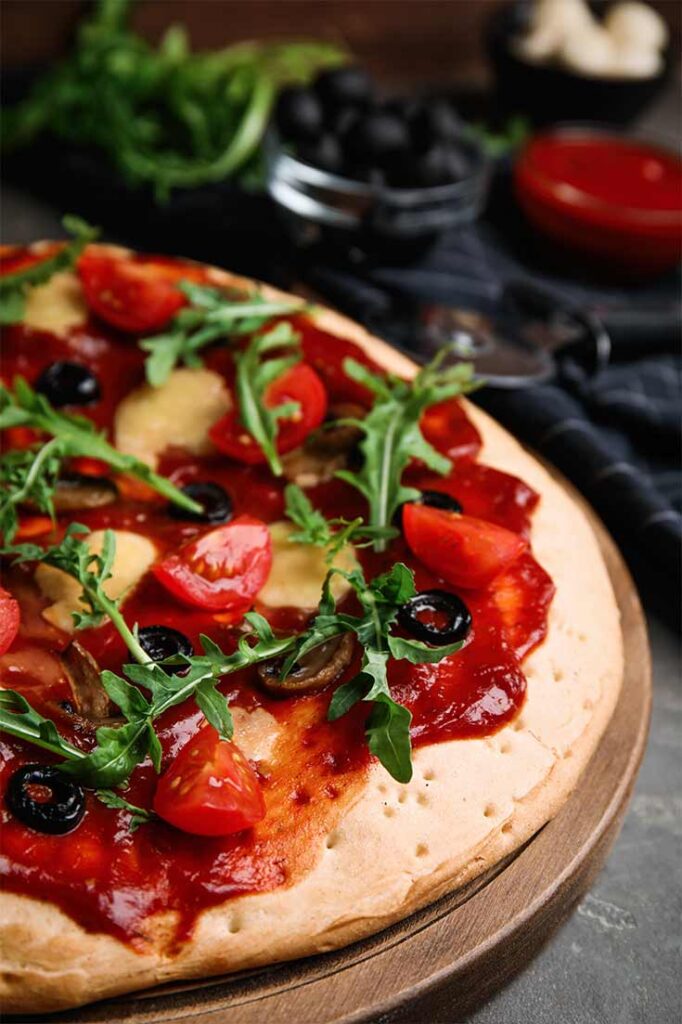3 Crucial Tips for Making The Best Gluten-Free Pizza
Gluten-free pizza is a staple in every gluten-free kitchen and should be delicious. I have tested many versions and narrowed it down to two.

Of all the factors involved in making a gluten-free pizza, what makes a seriously good one? What ingredient is a game changer?
Gluten-Free Living
I have been eating gluten-free on and off for about five years. I have been on for real, with no cross-contamination or “falling off the wagon” for almost a year.
Six years ago, I began to have severe pain and tingling in my left foot, then, shortly after that, my right foot. Within a few weeks, I started to fall. Although I no longer have balance instability, the pain and tingling never disappeared.
After being seen in two highly regarded teaching hospitals, four neurologists, and too many other specialists to list without boring you, what seems like 700 diagnostic tests and lab studies, two diagnostic surgeries, and many infusions, I still need a diagnosis.
All I know is I have a neurological condition diagnosed as everything under the sun but what it really is. MS? No. Guillain Barre? No. Meningitis? Um, no. Cancer? Heavy metal intoxication? Nope, and nope. Flu vaccine reaction? Probably, more than likely, yes. But what is my actual diagnosis? They just don’t know.
What Is Gluten?
Gluten is a protein found in wheat, barley, and rye. Gluten is in most bread, pasta, and in many commercial food products like soy sauce and even some candies.
Why Is Gluten Avoided?
I’ve learned throughout this healthcare journey gluten is a neurological and gastrointestinal irritant and can be the culprit of many medical issues. Gluten is most known to cause an autoimmune disease called Celiac sprue, which is different from a wheat allergy. It can also cause neurological problems, including peripheral neuropathy called gluten neuropathy. The GI issues can be anywhere from gas to hospitalization for electrolyte imbalance caused by severe diarrhea. Both GI and neurological problems caused by gluten intolerance can be debilitating and painful. It certainly couldn’t hurt me to avoid it.
Mastering The Art of Gluten-Free Pizza Making
One of the things I’ve always been most proud of in the kitchen is my pizza dough recipe. When I decided to cut out gluten, I knew I would start the experimentation process to find out how to get my pizza groove back.
I will never settle for mediocre pizza. I love to make it, and I love to eat it.
I have made pizza with every gluten-free flour there is. I’ve made pizza with cauliflower, gluten-free bread flour mixes, pizza with no yeast, lots of yeast, and so on. No matter what you use, with the lack of gluten, you must use something to compensate for that. Hence the use of xanthan gum, an additive that is typically used as a binding agent. Xanthan gum gives gluten-free recipes the elasticity gluten normally would, although it’s not an even substitution.
There is one commonality every gluten-free pizza I’ve made has, and that’s the texture. The best way to describe it is like cookie dough. There’s minimal cohesiveness, no stretchiness, just dense, sticky dough. This is a description I haven’t found on any of the gluten-free websites I’ve visited, so I was doing something wrong.
This should be reiterated to the home cook: your gluten-free pizza dough will NOT resemble typical pizza dough as far as texture. It may look like standard pizza dough at first, but once you pick it up and stretch it apart, there is no stretching; it just separates. However, that’s to be expected with gluten-free dough.
The dough must be pressed gently with your fingers or rolled out to get your pizza shape. Don’t worry if it breaks apart or has holes; press it back together and smooth it out until it looks like you want it to. You’ll think the pizza won’t turn out how it should, but I promise it will.
Gluten-Free Pizza Dough
The taste of gluten-free pizzas has been alright; some much better than others. I genuinely do like cauliflower crusts. Making it is somewhat labor intensive, but if you like to cook, it’s no more time-consuming than any other recipe that’s worth it. It’s doable on a weeknight if you start early and prepare. Otherwise, it’s a weekend project. Making it is when I discovered I liked it; before that, I wasn’t thrilled about even trying it. Although good, it can never replace traditional pizza dough made with real flour.
I recently ran across an article about using eggs in pizza dough, which made me curious about its effect on gluten-free pizza dough. I have never used eggs in my pizza dough before.
I made two versions for this article. Both were made with a combination of sorghum flour, rice flour, and tapioca flour, but one was created with the pièce de résistance, an egg, and one without.
The egg did make a difference. The bottom crisped somewhat better than without it, and this particular dough already has a decent crust. It also didn’t crack open in several places after baking, like the one without the egg.
Another vital aspect of this whole pizza-making situation is par-baking the dough. This ensured the crust was adequately done to the middle and allowed longer baking to get those crispy edges. We don’t typically do that with traditional pizzas because the dough cooks at the same time as the toppings. Par-baking gluten-free dough overall makes a better pizza crust experience.
3 Crucial Tips for Making The Best Gluten-Free Pizza
From all of the gluten-free cooking and pizza making I’ve done over the past few years, I’ve identified three essential components to making a delicious gluten-free pizza that rivals traditional pizza.
- Using a binding agent like xanthan gum and adding tapioca flour to the flour mixture also helps because it has similar structural elements as xanthan gum. If you don’t have xanthan gum, cornstarch can be a good stand-in, or use unflavored gelatin or arrowroot powder.
- Egg. Adding an egg to my recipe produced better results than without it from an overall texture standpoint.
- Par-bake the crust. This ensures your crust is done through the middle and gets those crispy little edges. Without doing this, you may have to take it out of the oven prematurely because the cheese would burn.
The use of tapioca flour and the xanthan gum together definitely help from a texture standpoint. The use of xanthan gum alone only makes up for the lack of gluten entirely when it comes to elasticity and cohesiveness, so this is definitely something I’ll keep in this recipe.
I will continue testing other flours and ingredients, especially for a thicker crust. I’m in the testing phase of making a gluten-free pizza dough using the Brazilian cheese bread recipe. I’m encouraged by the results and excited to share when I’m done.
Gluten-Free Pizza Recipe
Ingredients
- 1 cup sorghum flour
- 1 cup rice flour
- 1 cup tapioca flour
- 3/4 tsp xanthan gum
- 1 tsp sea salt
- 2/3 cup warm water – about 110 degrees
- 2 1/4 tsp instant yeast (or 1 packet)
- 1/2 tbsp sugar
- 1 egg, whisked
- 1 tbsp olive oil
Instructions
- Combine the flours, xanthan gum, and salt in the bowl of your stand mixer using the paddle attachment.
- In a small bowl, combine the yeast and sugar in warm water, and let sit for 10 minutes. (If after 10 minutes it doesn’t look frothy and fluffy, pour it out and do it again. Either your yeast has expired, or the water was too hot and killed it.)
- Turn the mixer on low and add the yeast mixture, egg, and olive oil to the flour mixture. Mix on low until all ingredients are combined, then for 1 minute on medium.
- Scrape the sides down using a spatula, then using oiled hands, flip the dough around in the bowl to cover it in oil, making it into a ball if not already formed. Cover with a clean kitchen towel and let rest for 30 minutes.
- Preheat oven to 450° (I cook my pizzas at 500°, so feel free to go higher if your oven will).
- Separate the dough in half. Wrap one half and refrigerate unless you’re making two pizzas now.
- Turn your dough out on a pizza stone or a half-sheet pan. Spread gently using your fingers or rolling pin. It will likely separate in places; push the dough back together.
- Drizzle with a little olive oil and par-bake for 10 minutes, then remove from oven.
- Top with sauce, cheese, and toppings and bake for 10-15 minutes, until cheese has melted and the crust is done.
This article originally appeared on Wealth of Geeks.

